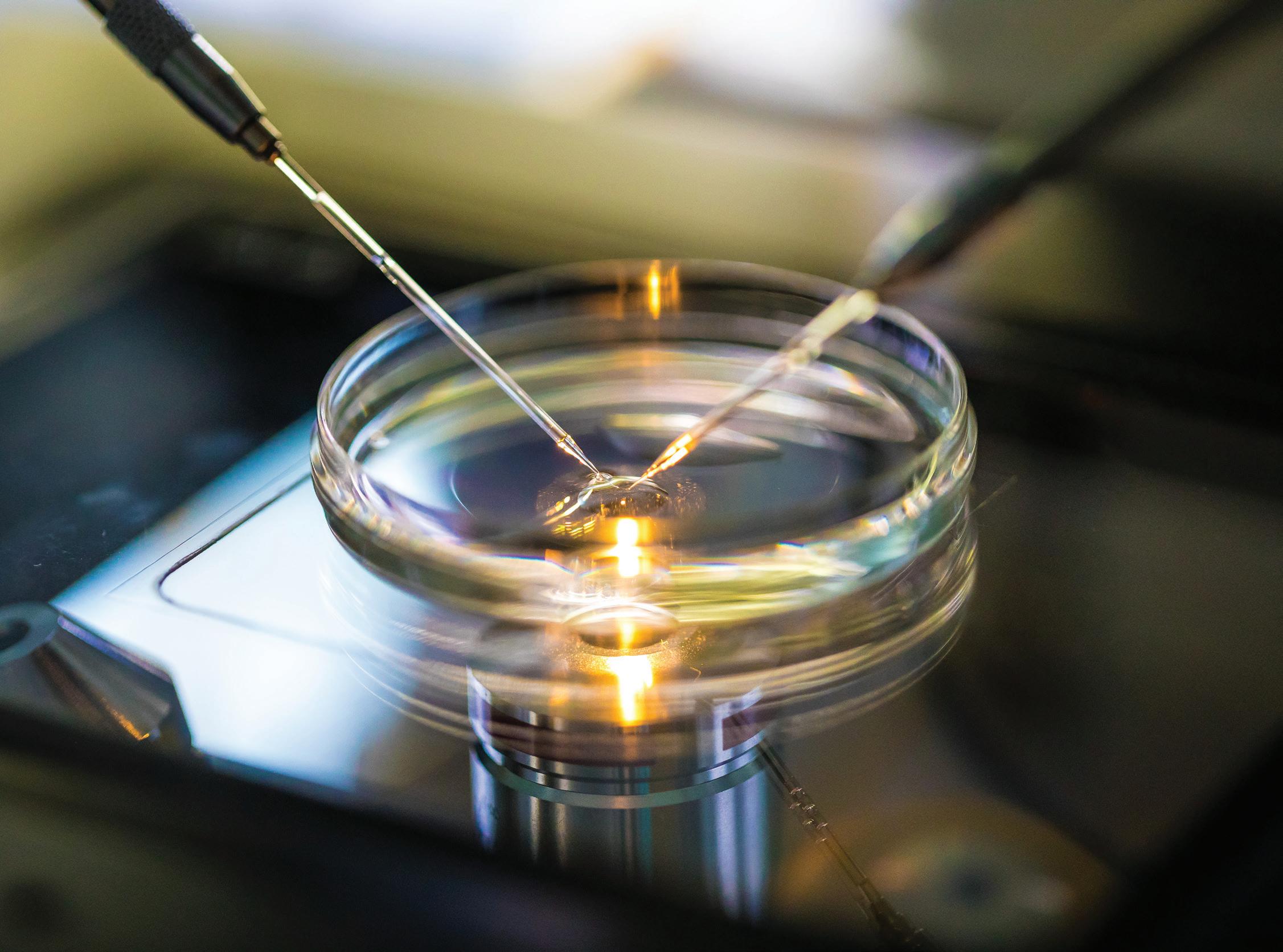
5 minute read
ARTIFICIAL CHEMIST: THE SELF-DRIVING CAR OF CHEMICAL SYNTHESIS
Édgar Mondragón
Al parecer, hay algo en común entre el cálculo de la ruta trazada por Waze o Uber a través de las calles de una ciudad y la síntesis de nuevas nanopartículas.
Advertisement
Ya sea en una celda solar o en la imagenología de tumores cancerígenos, la nanotecnología continúa ofreciendo respuestas a problemas con soluciones hasta hoy elusivas.
Los Quantum dots son un tipo de nanopartículas que recientemente han atraído la atención de diversos investigadores de la salud por su promesa de ayudar en el diagnóstico y tratamiento del cáncer. Éstas son nanopartículas que miden menos de 10 nanómetros. Como referencia, un cabello humano tiene un diámetro de alrededor de 10,000 nanómetros.
Los Quantum dots pueden ser sintetizados químicamente, sin embargo, esto implica un proceso caro y complicado, además de presentar frecuentemente efectos secundarios tóxicos.
Para evitar estas desventajas, un equipo de investigadores de la Universidad Estatal de Carolina del Norte y la Universidad de Buffalo ha desarrollado una tecnología llamada “Químico Artificial” que involucra inteligencia artificial (IA) y un sistema de automatización para realizar reacciones químicas sin intervención humana y así acelerar el proceso de R&D y manufactura de materiales basados en nanopartículas.
Entre sus ventajas, este sistema permite ingresar el resultado deseado como parámetro de entrada y con base en ello iniciar el proceso de experimentación con reacciones químicas hasta llegar a la respuesta óptima. “El Químico Artificial es similar a un vehículo autónomo, pero un coche autónomo al menos tiene un número finito de rutas posibles entre las cuales puede escoger para alcanzar su destino preseleccionado. Con el Químico Artificial, se dan los parámetros deseables, los cuales son las propiedades que se quiere tenga el material final. El Químico Artificial tiene que resolver todo lo demás, como descifrar cuáles serán los precursores químicos y qué ruta de síntesis usará, a la vez que minimiza el consumo de estos precursores químicos”.
It seems there is something similar about the calculation of the route followed by your Uber or Waze through the streets of a city and the synthesis of new nanoparticles. And whether in a solar cell or in the imaging of cancerous brain tumors, nanotechnology continues to provide answers to problems whose solutions seemed elusive until just yesterday.
Quantum dots are a type of nanoparticle that have recently attracted the attention of medical researchers by their promise of helping in cancer diagnosis and treatment. Quantum dots are nanoparticles that measure less than ten nanometers in diameter. To give an idea of how small that is, a human hair has a diameter of approximately 10,000 nanometers.
Quantum dots can be chemically synthesized, but this costly and complicated process frequently entails toxic side effects. In order to avoid these disadvantages, a team of researchers from North Carolina State University and the University at Buffalo have developed a technology called “Artificial Chemist,” which involves artificial intelligence (AI) and an automated system for performing chemical reactions without human intervention, thereby accelerating the research and development process and the manufacture of materials based on nanoparticles.
Among its many advantages, this system allows the desired result to be entered as an entry parameter. On that basis, the

experimentation process is initiated with chemical reactions that lead to the best result.
“The Artificial Chemist is similar to a selfdriving car, but a self-driving car at least has a finite number of routes to choose from in order to reach its pre-selected destination. With Artificial Chemist, you give it a set of desired parameters, which are the properties you want the final material to have. Artificial Chemist has to figure out everything else, such as what the chemical precursors will be and what the synthetic route will be, while minimizing the consumption of those chemical precursors.”
Chemical synthesis: as easy as hiring a ride with your app!
The robot that knows how to suture (and how it learned to do it)
“Originality is the child of imitation,” Octavio Paz has reminded us. But is there any potential for originality in artificial intelligence? It is too soon to know. What we can already see, however, is how robots are getting better and better at imitating us.
Researchers at the University of California, Berkeley, led by Dr. Ajay Tanwani, in collaboration with Intel, has developed a system call Motion2Vec, which is able to “learn” to suture by example, “watching” videos of surgeries performed by human doctors. The system uses a machine learning algorithm that “observes” the suturing process, following the movements of the surgeon’s needle and then attempting to reproduce it with the utmost precision.
In order to achieve optimal functioning, the system needs to train itself with thousands of hours of surgery videos, which does not happen to be a problem nowadays. “YouTube gets 500 hours of new material every minute. It’s an incredible repository.”
The technology is not yet ready to be used in the operating room, but it is expected to be used soon, as a sort of doctor’s assistant, freeing surgeon’s from the need to perform repetitive tasks and allowing them to concentrate on more complicated procedures.


And after all, how will we know when it’s ready? A doctor friend of mine confessed to me that, after months of practice as a medical student, he really only learned the subtleties of stitching up patients in the emergency room. Let’s give our robots a chance.
The generosity of light
The Use of Ultraviolet Light in the Combat against SARS CoV-2 With the onset of the present pandemic, scientists have been looking for effective non-contact sterilization options to eliminate traces of the virus from different surfaces. An old acquaintance, ultraviolet light (discovered in 1878), particularly in its UVC spectrum (with a wavelength of 254 nanometers), has demonstrated its effectiveness in the inactivation of SARS CoV-2. Nevertheless, this wavelength represents a risk to humans when directly radiated, so that it can only be used in uninhabited places. So far, the solution to










